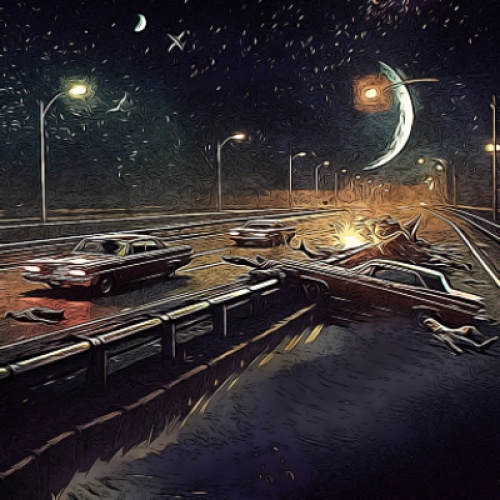Emery Dockery was driving down a deserted highway, the monotony of the road lulling him into a dangerous drowsiness. His eyelids grew heavy, and despite his best efforts, he succumbed to sleep. The car veered off the road, crashing into the rail with a deafening crunch.
In another dimension, a mirror image of the same event unfolded. Emery's doppelganger, driving in the opposite direction, also fell asleep at the wheel and crashed into the rail. The two dimensions collided head-on, creating a third dimension where chaos reigned.
When Emery and his doppelganger awoke, they found themselves in this third dimension, a bizarre melding of their respective realities. Buildings were upside down, gravity seemed optional, and time flowed in unpredictable spurts. The only constant was the paradox they had created.
To resolve the paradox and restore order, they had to figure out an equation that could turn Einstein's theory of relativity into a beacon of nocturnal light. Emery, a physicist in his dimension, knew that the solution lay in manipulating the energy-mass equivalence principle,
In another dimension, a mirror image of the same event unfolded. Emery's doppelganger, driving in the opposite direction, also fell asleep at the wheel and crashed into the rail. The two dimensions collided head-on, creating a third dimension where chaos reigned.
When Emery and his doppelganger awoke, they found themselves in this third dimension, a bizarre melding of their respective realities. Buildings were upside down, gravity seemed optional, and time flowed in unpredictable spurts. The only constant was the paradox they had created.
To resolve the paradox and restore order, they had to figure out an equation that could turn Einstein's theory of relativity into a beacon of nocturnal light. Emery, a physicist in his dimension, knew that the solution lay in manipulating the energy-mass equivalence principle,






